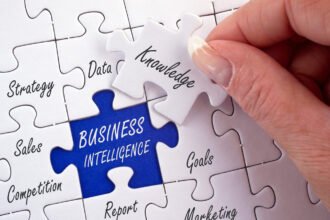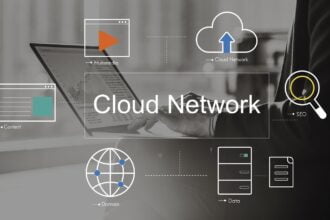In his new book, Antifragile: Things that Gain from Disorder, Nassim Nicholas Taleb, the bestselling author of The Black Swan, calls “antifragile” things that not only gain from chaos but need it in order to survive and flourish.
In his new book, Antifragile: Things that Gain from Disorder, Nassim Nicholas Taleb, the bestselling author of The Black Swan, calls “antifragile” things that not only gain from chaos but need it in order to survive and flourish.
Taleb, criticizing in the book the tendency of policy makers to over-medicate the economy (see here for a summary of his policy recommendations), says that antifragility “is not just a useful heuristic for socioeconomic matters but a crucial property of life in general. Things that are antifragile only grow and improve under adversity. This dynamic can be seen not just in economic life but in the evolution of all things, from cuisine, urbanization and legal systems to our own existence as a species on this planet.”
 Big data is perceived by many as a big disruption for IT organizations. Not only it means working with new technologies and new types of data but it requires analytical or data science skills that are not necessarily associated with IT’s “traditional role” of “keeping the lights on.”
Big data is perceived by many as a big disruption for IT organizations. Not only it means working with new technologies and new types of data but it requires analytical or data science skills that are not necessarily associated with IT’s “traditional role” of “keeping the lights on.”
In a recent article in the Sloan Management Review, Tom Davenport, Paul Barth and Randy Bean recommended “moving analytics from IT into core business and operational functions,” arguing that “the traditional role of IT—automating business processes—imposes precise requirements, adherence to standards and controls on changes,” whereas the advantages of big data and data science are based on “discovery and agility—the ability to mine existing and new data sources continuously for patterns, events and opportunities.”
Going beyond the question of where in the organization to put data scientists, others make similar recommendations regarding the entire IT function, assuming that it will become less and less relevant. Earlier this year Gartner predicted that by 2017, the CMO will spend more on IT than the CIO. More recently, Gartner predicted that technology spending outside of IT will rise from 20% of total technology spending in 2000 to almost 90% by 2020. Similarly, IDC predicts that by 2016, 80% of new IT investments will directly involve Line-of-Business (LOB) executives, with LOBs the lead decision makers in half or more of those investments.
While you may think that CIOs in this scenario are doomed to become as dispensable as the light switch they are supposed to keep turned on, Gartner provides a big data escape hatch to a redefined career path. “The chief digital officer will prove to be the most exciting strategic role in the decade ahead,” says Gartner’s David Willis, “and IT leaders have the opportunity to be the leaders who will define it.”
I would argue that CIOs could aspire to the most exciting strategic role only if they embrace antifragility and abandon the traditional characteristics of the IT organization and infrastructure—resilience, standardization, control, stability. Instead, CIOs should transform IT into an organization that thrives on agility, adaptability, and speed. To lead rather than follow, CIOs should cultivate an organization that is focused on mastering constant and rapid change and its hallmark is an entrepreneurial culture of “fail fast.” IT should be perceived and managed as an evolving organism rather than a well-oiled machine. “Deprive your bones of stress and they become brittle,” says Taleb. Failure is an option, and experimentation is the foundation of learning, adapting, and succeeding.
Digitization has made data an indispensable resource for any enterprise, second only to people. Big data is about applying this resource in the most optimal way, changing the way we live and work, and giving rise to a digital economy.
Succeeding in the digital economy means embracing antifragility and abandoning stability, resilience, and rigidity. The industry that is most in the news this holiday season isn’t the “retail industry” from ten years ago and is completely different from what it was just 20 years ago. At that time, the most valuable company on the U.S. stock market was a retail innovator, Walmart.
Not anymore. Two decades of digitization had brought together previously distinct industries such as computers, consumer electronics, telecommunications, publishing and media. The most successful company in this re-invented “industry,” Apple, is today the most valuable company. It is also one of the most successful businesses in the “retail industry.” In response to Apple and Amazon and all the rest of the industry-reengineering, data-driven, digitally-born competitors, Walmart, which has been a leader in using IT to optimize its supply chain and all aspects of its operations, is now using big data to understand better its customers and improve how it is doing business online. At the recent Techonomy conference, Gibu Thomas, senior VP for mobile and digital at Walmart, told Forbes’ Eric Savitz that “increasingly the entire retail business at Walmart is digital.”
The IT organization and CIOs may become irrelevant in the digital economy. Or they may rise with the big data wave to lead the digital transformation of businesses, non-profits, and government agencies. CIOs could use this big opportunity to demonstrate leadership that is based on deep experience with and understanding of what data, big or small, is all about—its management, its analysis, and its use in the service of innovation, the driving force of any enterprise. Strengthened by the discipline of antifragility, CIOs may become Chief Innovation Officers.







